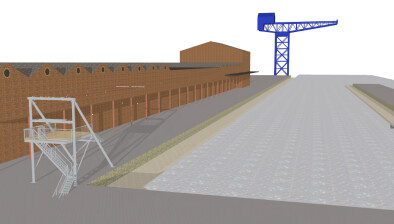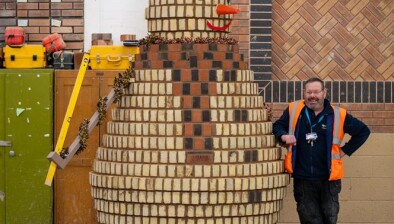And finally… Dirt used to construct new freeway overpass
For a while, it looked like a brand new road to nowhere - lanes under construction for South Carolina’s Highway 178 appeared to dead end into a wall of dirt under the newly built overpass for Morning Drive.
Engineers say the unique construction method takes advantage of conditions in the area, and it’s actually cheaper than regular bridge construction.
From the west, dirt goes right up to the new surface of the bridge. Looking from the east, dirt is now being dug out from under the new structure.
“They brought in 60,000 tons of material and built up the dirt pad underneath this bridge,” Resident Engineer Wade Boeck told Eyewitness News. “That enabled them to place the bridge structure on this dirt pad.”
Now from the east, some of that dirt is being dug out — revealing the underside of the new bridge, along with new support columns that were put in before the dirt was piled up.
“It’s very unique,” Boeck admits, he’s with Mendoza and Associates. From the Thomas Road Improvement Project (TRIP), spokeswoman Janet Wheeler said of 24 recent bridge projects, this is the only one built like this.
Usually, a bridge is built over wood and metal beam and support structures. This time, it was dirt. And they had plenty of it on hand.
Boeck says a lot of dirt had to be dug out to create new, lower roadways, and construction crews needed to do something with it.
“They needed a place to stockpile materials as they were processed,” he explained. “This was a good place, it was out of the way, and it served a dual purpose.”
When the dirt was first piled up, a thin layer of material was put on top, before the bridge was laid. Boeck says that layer is called a “rat slab,” and when the support dirt is removed, it peels away leaving a smooth underside to the new overpass.
He says piling up the dirt, and then digging it out is actually a cost-saver.
“It enabled them to eliminate the cost associated with building — erecting — false work and also stripping it,” Boeck said. Even with the time and work to move the dirt, he says it’s still a lot quicker.
After it’s removed from under the new bridge, the dirt will be moved again, and become a base layer for the new lanes of Highway 178.
Boeck said the lanes being currently used by traffic will eventually be mostly converted to the on- and off-ramps at Morning Drive.
It’s expected the project will be done by summer 2015.
Boeck said the unusual bridge-building was possible because they had a place to detour traffic, and all that dirt they could use.
“It’s going to be kind of amazing,” Boeck said. “You see this big mound of dirt and a bridge. And then as you see them start excavating — all of a sudden, you see these columns appear. Which is kind of neat.”














